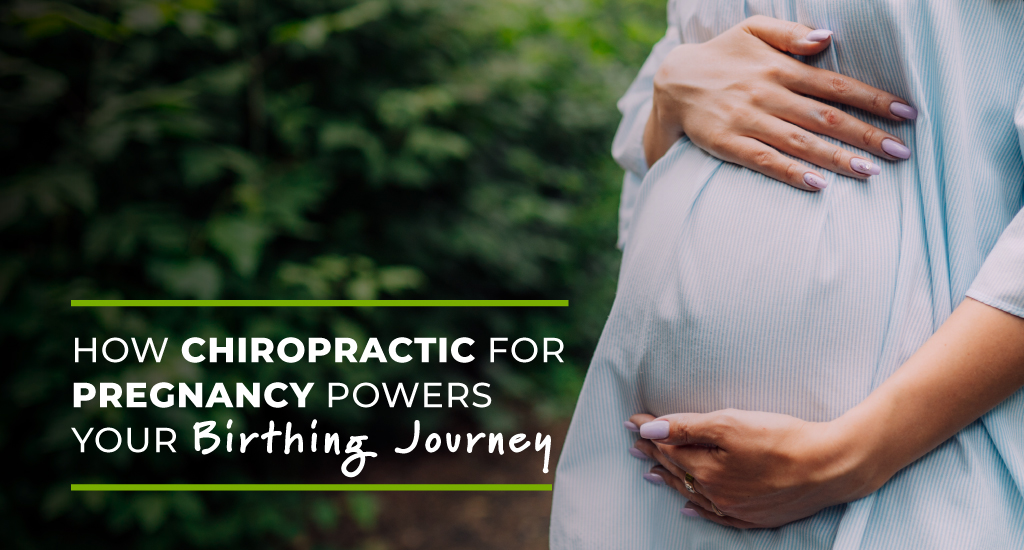
Why See a Chiropractor During Pregnancy?
Chiropractic for pregnancy has been clinically proven to manage pain and misalignment during those transformative nine months. Some discomfort is inevitable, but it can be managed and minimized.
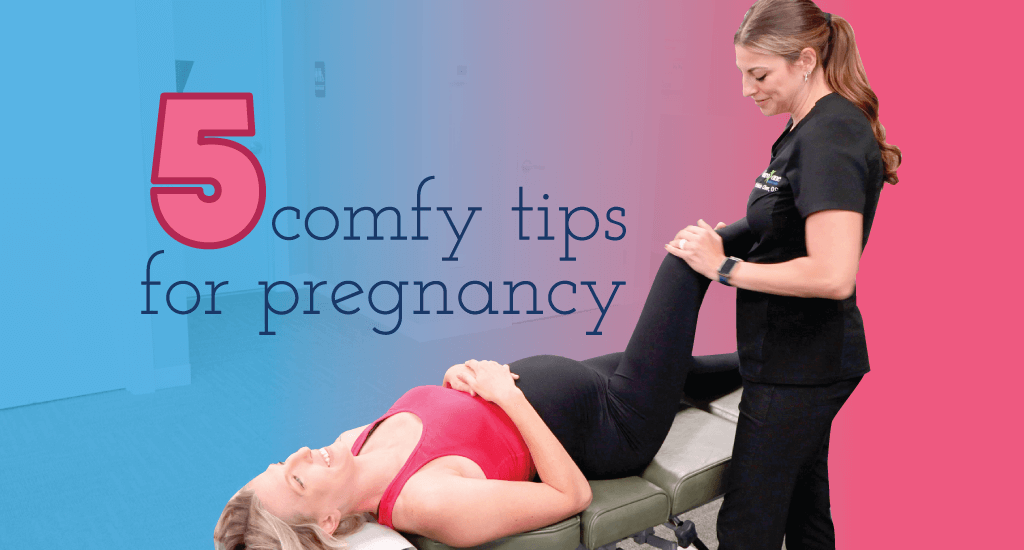
Congratulations! As chiropractors, we are always amazed at what the human body can do, but nothing is quite as miraculous as pregnancy. But miraculous though it may be, it isn’t always easy – or comfortable. That’s we were bringing you these X tips for a more comfortable pregnancy, so you can not only enjoy this time – but keep up all the things that make up your life outside of motherhood.
Even if you’ve never experienced it, the side effects and symptoms of pregnancy are familiar to just about anyone who has ever watched television or movies: feeling gassy or nauseated, eating and drinking more, not to mention heartburn – and those are just your partner (too soon for Dad jokes?)
The changes that happen in your body when you’re pregnant extend well beyond the pelvis, leading to some surprising – and sometimes uncomfortable or downright painful symptoms.
During pregnancy, your body releases the hormone Relaxin, which serves exactly the purpose you’d expect with a name like that. Relaxin relaxes your joints and ligaments to make labor and delivery possible. But since the release of Relaxin isn’t limited to just labor and delivery – or to just your pelvis – it can have some unexpected side effects as well. When your ligaments loosen up too much, they can become unstable and painful. Add that to the pressure of carrying an extra 25-30+ pounds and it’s no surprise that somewhere between 30%-70% of pregnant women experiencing low back pain alone.
Hip pain. Research – and experience – have shown that pelvic alignment changes during pregnancy. For many women, this can lead to pelvic misalignments and imbalances, resulting in hip pain.
Foot pain. This includes plantar fasciitis, painful inflammation of the plantar fascia, which can make walking difficult. Not only do you gain weight during pregnancy; it is not distributed evenly. This can change your gait (the way you walk) leading you to over-pronate. Add in edema (swelling), plus the added pressure of that additional weight on your knees and ankles, and the result can be pain in your heel, arch pain, and/or the ball of your foot.
Swelling. Fluid retention is common during pregnancy as your adrenal glands are also producing more of the hormones (aldosterone and cortisol) which make the body retain fluid. This additional fluid can compress soft tissues, increasing risk of musculoskeletal pain conditions. Swelling can also increase as the enlarging uterus interferes with blood flow from the legs to the heart.
Carpal Tunnel Syndrome. An astonishing 31%-62% of pregnant women will experience Carpal Tunnel Syndrome during pregnancy thanks to all that extra fluid increasing pressure and swelling in the blood vessels throughout your body – including the carpal tunnel area of the wrist. This can compress the median nerve, causing the shooting, burning, or tingling pain of Carpal Tunnel Syndrome.
Note: If you are experiencing any of the following symptoms during your pregnancy, contact your health provider immediately:
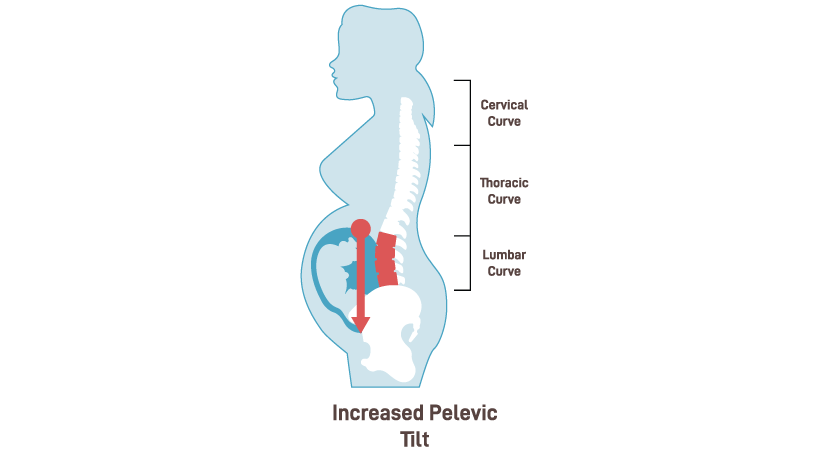
As that baby bump appears, adding a new curve to your silhouette, your growing uterus also adds curvature to your spine. The weight of your baby, combined with the natural weakening of belly muscles as they stretch, can pull your lower spine forward. This strains the back muscles and lower joints of the back, causing pain and tension.
“Various biomechanical and hormonal changes occur during pregnancy that can alter musculoskeletal alignments by affecting the key areas of the body such as spinal curvature, balance, and gait patterns and can greatly impact the quality of life (QOL) by increasing back pain and the risk of falls.3
The overall postural effect of pregnancy by the final month is as follows: 2 4 5 6 7 8 9 10 11 12
But don’t despair! While the physical changes of pregnancy are inevitable, pain is not. And for those who do find that the shifts and shimmies that came with their burgeoning bump have led to pain or discomfort, here are our favorite tips for a more comfortable pregnancy.
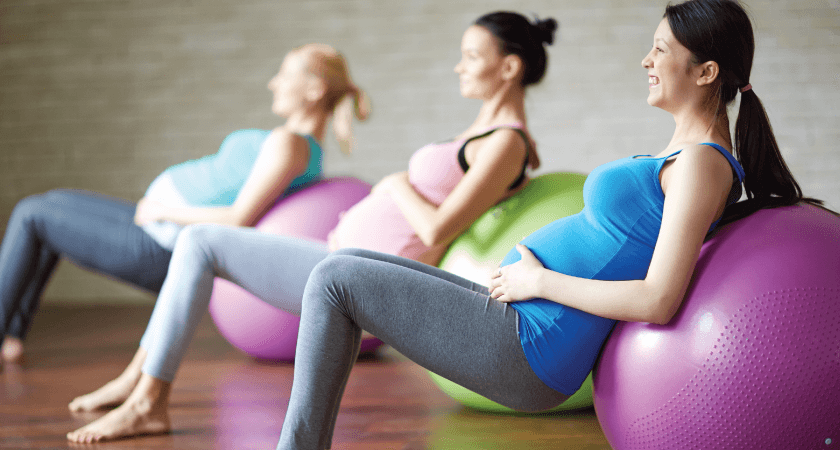
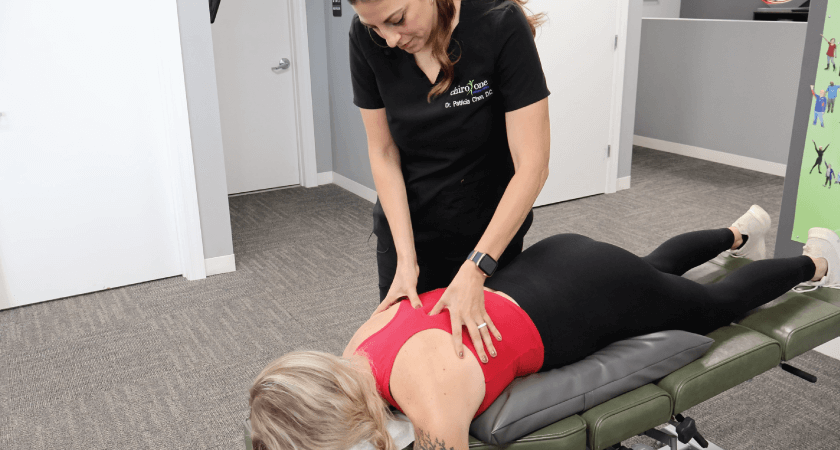
Combining regular adjustments with light exercise and stretching, or easy home remedies like hot and cold therapy (ask your doctor first!) can help relieve the aches and pains of pregnancy.
At Chiro One, we don’t believe anyone should have to live with pain. If musculoskeletal pain is keeping you from enjoying your pregnancy, chiropractic care from Chiro One can help. Find a clinic near you, or schedule an appointment today.
Subscribe and get news, articles & offers sent right to your inbox each month.
"*" indicates required fields
By subscribing you are agreeing to the Terms and Conditions and Privacy Policy.